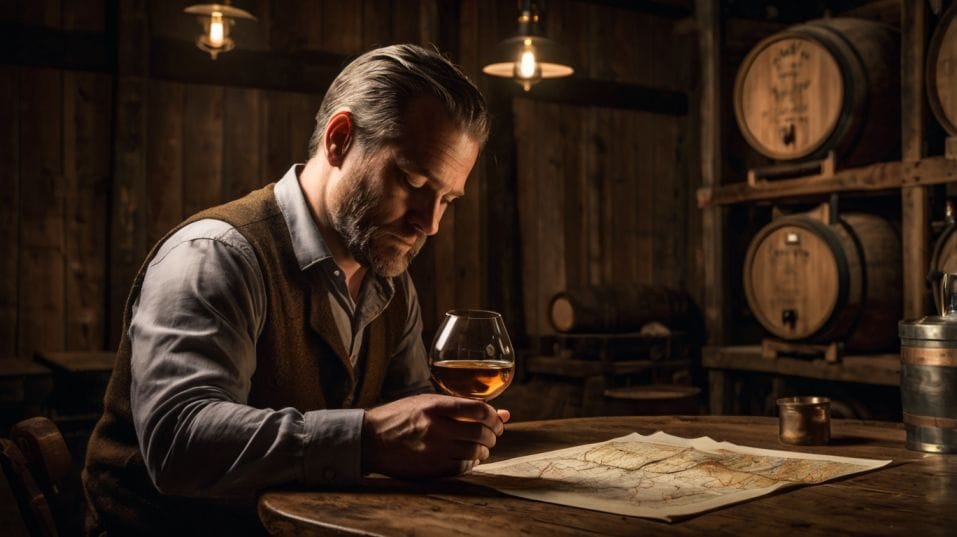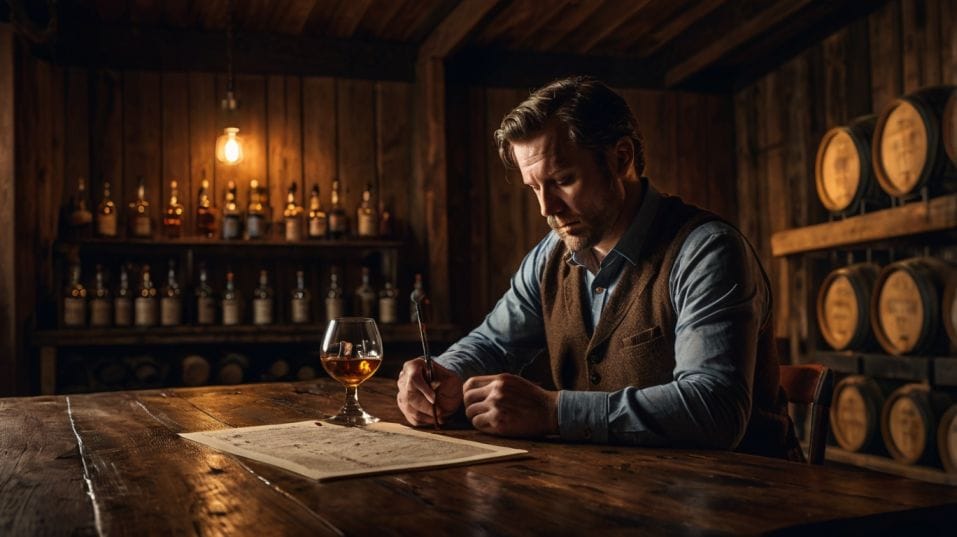How to Pick a Whiskey Based on Where It’s From
Want better whiskey without the guesswork? Learn how where it's made shapes flavor—and build a confident, collection-worthy palate.

Ever wonder why the same whiskey can taste wildly different depending on where it's made? If you're starting to explore the deeper side of whiskey, this one insight will fast-track your palate and sharpen your collection: geography matters.
Not just as trivia, but as the blueprint behind flavor, texture, and style. Understanding a whiskey’s place of origin helps you stop guessing and start choosing with confidence—whether you're tasting, collecting, or learning the ropes.
Why Geography Shapes Flavor
Every whiskey is a product of its environment. This isn’t marketing spin—it’s chemistry, climate, and culture colliding in the glass.
Think of it this way: if you move the same mash bill from the Scottish Highlands to a Texas warehouse, you don’t get the same whiskey. You get something altogether different.
Location controls more than just style. It affects what grains are grown, how the spirit is distilled, what kind of barrels are available, how long the spirit ages, and how that aging plays out.
A humid, high-heat rickhouse in Tennessee pushes whiskey in and out of oak like a bellows. A cool, stable warehouse in Japan preserves subtlety over brute force.
Understanding these regional influences isn’t academic—it helps you build a smarter collection, dial in your palate, and recognize why certain whiskies keep showing up in your glass again and again.
Let’s break down the major whiskey-making regions and how they shape what ends up in your bottle.

Scotland: Structure, Smoke, and Subtle Warfare
Scotch isn’t a single flavor profile. It’s a network of regions, each with its own traditions, grain sources, and aging conditions. If you only know Scotch as “peaty,” you’ve barely scratched the surface.
Highlands
These whiskies tend to be bold and versatile—ranging from heather-honey and stone fruit to light smoke and spice. You’ll get everything from delicate to powerful here, depending on location and producer.
Speyside
The most densely packed region in Scotland, Speyside malts often lean toward elegance—apple, pear, vanilla, and sweet malt. Great for training your palate to appreciate subtlety.
Islay
The infamous smoke show. But it’s more than just peat and brine. Good Islay whisky balances medicinal smoke, coastal salinity, and rich malt sweetness. These aren’t casual sips—they demand attention.
Lowlands
Light, grassy, floral, sometimes grainy. Think pre-dinner pours or palate cleansers. Not as bold, but useful for contrast and refinement.
Campbeltown
Funky, oily, maritime, occasionally meaty. Fewer distilleries, more edge. If you like whisky that tastes like it’s spent time on a working dock, dig into this region.
What to take away? With Scotch, region is practically a flavor code. Knowing geography means knowing what’s likely to be in the bottle. When you’re ready to develop range and complexity, use this map to explore deliberately.
Ireland: Grace and Hidden Power
Irish whiskey has long been mislabeled as “simple” or “starter-friendly.” Sure, it’s smooth. It’s often triple-distilled and made to be clean and fruity. But underneath that softness lies one of whiskey’s best-kept secrets: pot still whiskey.
This style—unique to Ireland—uses a mix of malted and unmalted barley to create a spicy, creamy texture with layers of depth. You won’t always see it clearly labeled, but when you find it, you’ll know.
It doesn’t burn. It simmers. It’s great for learning to taste spice, texture, and mid-palate development without needing high proof or heavy wood influence.
Irish whiskey is also quietly experimental. While the big players still dominate, smaller distillers are pushing boundaries with cask finishes, barley varieties, and fermentation techniques.
If you’re exploring whiskey from a flavor-first mindset, this is a rich playground hiding in plain sight.
United States: Flavor by Fire and Barrel
American whiskey, especially bourbon, is bold, structured, and driven by oak. That’s not just cultural—it’s environmental.
In Kentucky, summer heat expands the whiskey into charred barrels, then winter draws it back. That in-and-out motion creates caramelization, spice, and richness in just a few years.
But don’t stop at “bourbon.” American whiskey splits fast once you start paying attention.
Bourbon
Must be at least 51% corn. Expect vanilla, caramel, spice, and toast. High-rye bourbons deliver extra pepper and bite. Wheated bourbons smooth it out.
Geography plays a role—Kentucky is classic, but Indiana, Texas, and New York are producing serious contenders.
Rye Whiskey
Leaner, sharper, more aggressive. If bourbon is a leather armchair, rye is a straight-backed stool with a view of the fight. Great for cocktails. Great for food pairings. And great for training your palate on spice and dryness.
Tennessee Whiskey
Technically a subtype of bourbon, but charcoal mellowing (Lincoln County Process) adds a smoother edge. Don’t assume it’s always softer—it can be layered and dense too.
American whiskey is less about place and more about style and mash bill. Learn the grain breakdowns. Know your own preferences for sweetness, spice, and proof.
And don’t be afraid to explore outside Kentucky. Texas, Colorado, and even California are reshaping what “American whiskey” means—faster than the hype can keep up.
Japan: Quiet Precision, Loud Complexity
Japanese whisky takes its cues from Scotland—but filters everything through a cultural lens of perfectionism. These whiskies are rarely bombastic.
They’re deliberate. Balanced. Sometimes bordering on austere. But don’t confuse restraint for lack of complexity.
What makes Japanese whisky stand out? Meticulous cask selection (often using Mizunara oak), ultra-clean distillation, and aging conditions that preserve nuance.
These whiskies are built for slow sipping. If you want to improve your ability to detect subtle changes in flavor, nose, and mouthfeel, Japanese whisky will sharpen your senses like nothing else.
It’s also one of the most varied regions in terms of blending philosophy. Some producers create a full spectrum of styles within one distillery.
That means you can explore contrast—delicate grain vs. smoky malt, sherry cask vs. bourbon cask—without jumping continents.
If Scotch shows you the landscape, Japanese whisky teaches you to see the shadows.
Canada: Under the Radar, Overdelivering
Canadian whisky has two reputations—one boring, one brilliant. The boring side comes from mass-market blends: soft, sweet, vaguely spicy.
The brilliant side lives in small-batch rye, carefully constructed grain blends, and producers who still treat whiskey as a craft, not just a product.
Canada’s strength is its flexibility. The rules are looser, which means producers can blend individual grain whiskies like tools in a box. That leads to balance, precision, and often very elegant results—especially in high-rye bottlings.
The key to Canadian whisky? Read the label, then read between the lines. Look for age statements, transparency around mash bills, and distillers who emphasize flavor, not gimmicks.
When done right, Canadian whisky offers clarity, length, and a kind of poised power that other regions sometimes overlook.
Final Thoughts: Drink with Intention
Picking whiskey by region isn’t about being right. It’s about being aware. When you understand what different places bring to the table, you start drinking with purpose.
You recognize patterns. You see through hype. You know when to spend—and when to pass. Don’t just collect bottles. Build a palate. Go wide before you go deep. Taste across continents. Compare styles.
Try an Islay back-to-back with a Kentucky rye. Notice how one region amplifies sweetness while another pushes spice or restraint.
The more you know where your whiskey comes from, the better you’ll understand where it can take you. So pick a region you’ve been ignoring.
Buy a bottle that challenges your comfort zone. Pour slow. Taste smart. Build your collection—and your confidence—one pour at a time.




